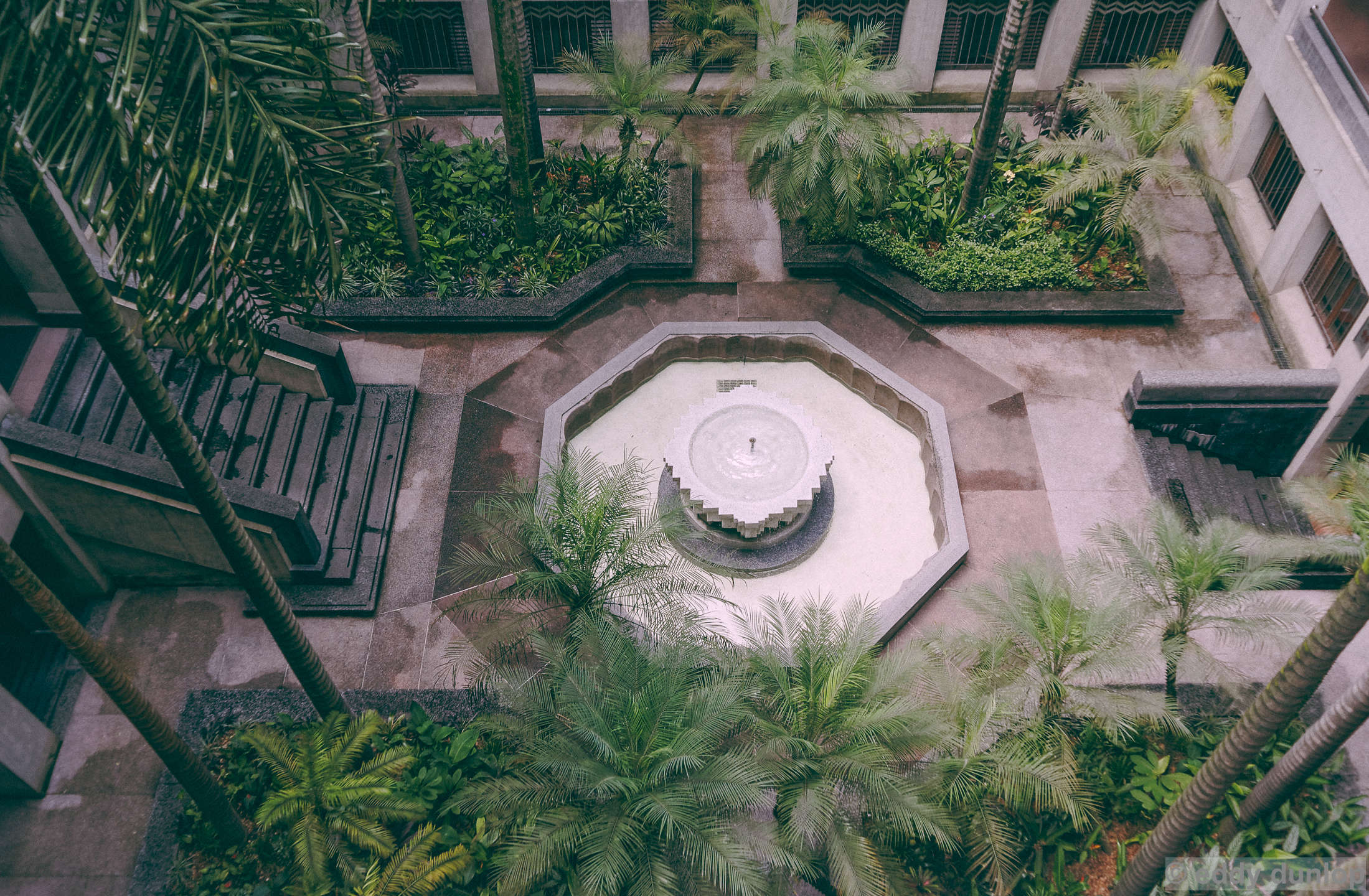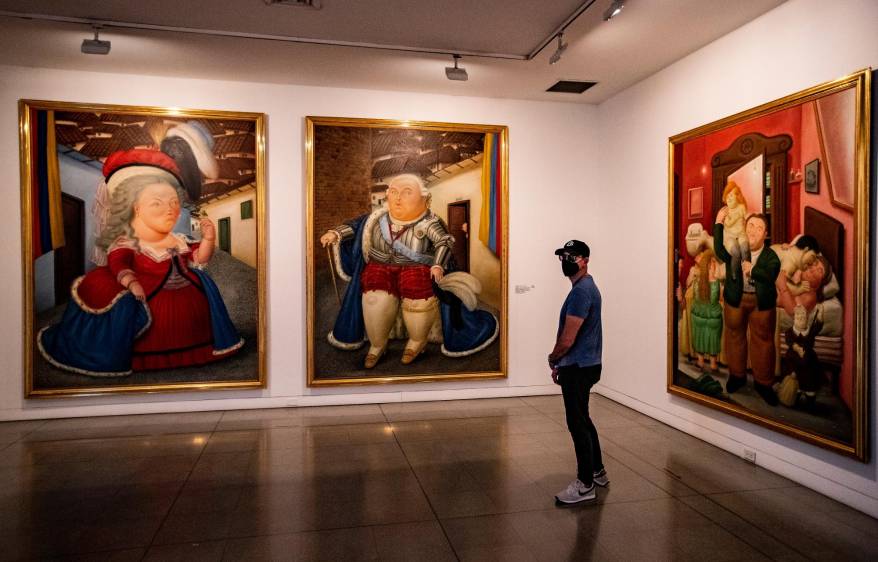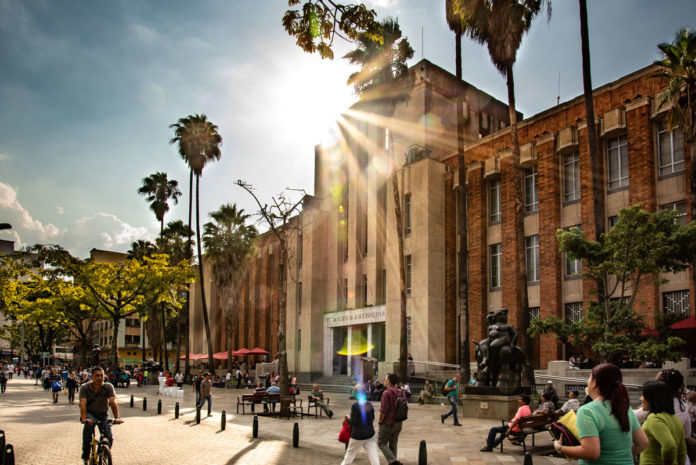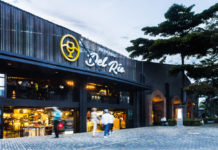There’s no doubt that Medellin is a city full of culture, art, and good museums.
Speaking of museums, if you love strolling through galleries and taking in some culture, then you have to check out the Museo de Antioquia.
This is a place where you can delve into the art and history of the paisas and check out exhibits of works by world-class artists such as Fernando Botero.
Keep reading to learn a little more about this museum and read what to expect on your next visit.
The Beginnings of the Museum

The Museo de Antioquia began its operations in November 1881, with many ups and downs, crises, closures, and reopenings under the name of Zea Museum.
The museum was recognized then as the first in Antioquia and the second in Colombia, but it wasn’t until the support of Fernando Botero that this place began to grow and become an icon of art in Medellín.
Notero donated a large part of his works to the museum and provided economic and artistic support by moving it to a new location in the old Municipal Palace in 2000 under the current name, Museo de Antioquia.
This museum is in downtown Medellin, right in front of the iconic and tourist Plaza Botero, where you’ll also be able to see the 23 exhibits “Gordas de Botero” before entering.
What You’ll Find in the Museo de Antioquia

Inside this museum, recognized as an Architectural Heritage of Colombia, both the environment and exhibitions are about giving relevance to the city’s heritage through art.
In the Museo de Antioquia, you’ll find drawings, paintings, sculptures, and objects with historical value. A few examples include ceramics, indigenous goldwork, and even ancient weapons.
You’ll also see permanent works by local artists such as Debora Arango and Pedro Nel Gomez. And of course, you’ll notice the largest collection of Fernando Botero works which boasts more than five thousand artistic pieces.
If you aren’t proficient in Spanish, note that some of these works have descriptions in English. That way, visitors from all over the world can read them.
The museum has twelve rooms open to the public which are spread out over three floors and two wings. The rooms are:
- Fernando Botero Donation Room: This features the best of Fernando Botero.
- International Art Room: This room features modern and contemporary art at an international level.
- Extensions to the Story of Art in Antioquia: This is an extension of the permanent exhibition from the end of the 19th century until the middle of the 20th century. It deals with the history and important events of the Antioquians as exhibited by ancient and contemporary artists.
- Promises of Modernity Room: This exhibition addresses the period from 1950 to 1999 and the entire history of cultural development in Medellin.
- Decolonial Dialogues Room. The Persistence of Dogma: This room contains works and documents from the pre-Columbian period.
- Intercultural Dialogues Clay Has a Voice: This room features ceramics from different time periods and origins.
Museo de Antioquia also has souvenir shops, handicrafts, and replica pieces that you can check out after you tour the museum.
What Are the Prices in the Museum?

Regarding prices, the rates for visitors depend on who is spending time at the museum.
There’s a standard price for national visitors and another for foreign visitors. National visitors get a slight discount for being locals.
On top of that, the entrance is free for people of strata 1, 2, and 3. These are the three lowest financial classes in Medellin.
Students get lower discounts if they present their student ID card.
There are also special group discounts. Groups with a minimum of 5 people have a special rate per person, whether they’re national visitors or foreigners.
You can also hire guided tours and bilingual guides 48 hours in advance. This comes with an extra fee, however.
Botero’s Influence on the Museo de Antioquia

The aforementioned Fernando Botero is a paisa painter, sculptor, and draftsman currently residing in Italy. He began donating his works in 1976 when he gifted seven oil paintings, a pastel, and two watercolors to the Museum.
In 2000, he donated another 114 paintings and 21 works by international artists from his collection to the Museo de Antioquia. And, that’s all not to mention the 23 sculptures in Plaza Botero.
Botero has his own room within the museum that houses all his world-renowned works with his unique voluminous characters. These characters recreate the everyday lifestyle in Colombia, representing the country’s history, religion, and culture.
His last donation so far was the series El Viacrucis in 2012.
How to Get to the Museum of Antioquia

The Museum is in an area full of things to see. Nearby you’ll find the Plaza Botero, the Palace of Culture, the Parque de Berrio, and the Nutibara Hotel.
However, the surroundings of these places seem to be a bit unsafe and sometimes generate a bit of fear for tourists.
Despite what they may seem, however, the area is pretty harmless.
If you want to take a walk through the different parts of the city center and kill a few birds with one stone on your way to the museum, you can use the metro system and get off at the Parque Berrio station.
Then, you’ll walk for five-ten minutes, passing through a plaza featuring some of Botero’s sculptures. At the end of the walk, you’ll arrive at the museum.
Keep in mind that it’s a commercial area full of many people, and sellers of all kinds of products, offering instant photos, fruits, and souvenirs.
You may want to plan to stop and pick up a couple of trinkets to take back home.
You’ll also find police security in these main squares, but this doesn’t mean you can stop being vigilant and taking care of your belongings. For example, it’s better to take a selfie than to ask anyone to take a picture of you in this area.
On the other hand, if you don’t feel safe with this self-guided tour, you can also take a taxi or use a rideshare app to get right up to the entrance.
Visit the Museum of Antioquia
Seeing as this place houses a lot of history and art associated with the national and Antioquian heritage, it’s a great place to go if you want to see and understand what Medellin is today.
You’ll be delighted with works by local and international artists in a historic building in the center of the city. Plus, you’ll get a chance to check out more of the famous and traditional works of Botero, an icon of Paisa art.
Already been to the Museum of Antioquia? Let us know in the comments what you thought!











